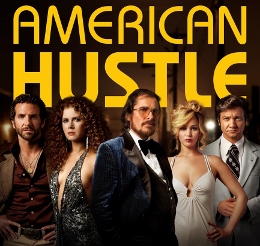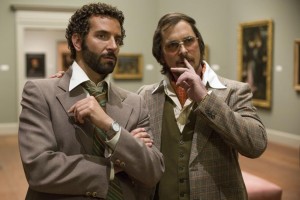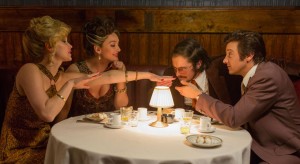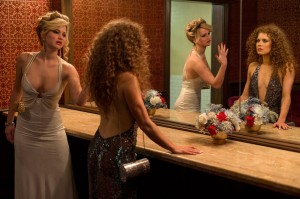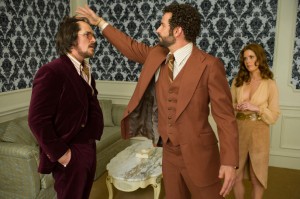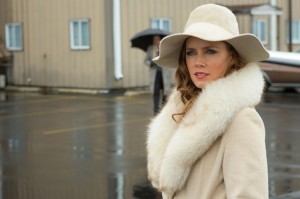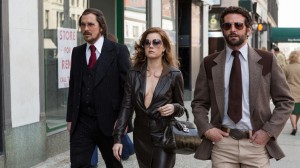WHO’S HUSTLING WHOM?
In American Hustle’s would-be signature moment, a con man shows a G-man a Rembrandt in a gallery. He explains that it’s really a fake. Who is the better artist, he asks, the original artist or the person who took the time and skill to fake it?
Well, I would say the artist. He is the one who perceived it. He is the one who conceived it. He is the one who summoned the inspiration. He is the one who saw the new possibilities in style. To answer “the forger” is to define art only as the flesh of the work and not the soul. David O. Russell’s tale explores but confuses the relationship of art and artifice, making the case for the con over the reality. Is this inspired thinking? Is it trolling? Or is it being taken in?
Watching American Hustle, Martin Scorsese would be most entitled to scream forgery. With room-to-room tracking shots, slow fades, slow-motion shots underlined by period music, and placement of Robert DeNiro in a gangster cameo, Russell barely hides his huge debt to Goodfellas and Casino (the cinematographer here is Linus Sandgren). In its exploration of power and ethics, as well as its farcical comedy, it more than resembles The Departed.
Aside from Scorsese, Hustle references other films. It indulges in a Saturday Night Fever disco passage, and borrows shots from films such as Pulp Fiction, which famously is itself an artistic forgery. But I could never quite tell: Do these touches make it a thesis about the similarity between art and the con? Or are they just standard acts of artistic scavenging?
Other than that, American Hustle is an engaging caper. A pair of con artists (Christian Bale and Amy Adams) get rich by claiming to have banking connections in England. When a zealous FBI agent (Bradley Cooper) pins them, he forces them into a sting operation aimed at bribing politicians on behalf of a phony Arab sheik (Eric Warren Singer and Russell’s screenplay is based on the true-life ABSCAM scandal of the early 1980s). Whether that plot actually matters is another story. The movie is more about the illusions and power plays among the principals, with an assist from Jennifer Lawrence as Bale’s passive-aggressive wife, and Jeremy Renner as an altruistic New Jersey mayor who wants to put Atlantic City on the map.
Adams, who often shrinks in big films, finally gets her not-so-virginal revelation: She dominates both the men and the movie. Hustle, one of the few Russell films that hasn’t left me shaking my head and looking for the exit, does for Steely Dan’s “Dirty Work” (which has always been a cinematic song) what Zodiac did for Donovan’s “Hurdy Gurdy Man.” Even though both the performances and the story are rewarding, the hustle in the movie matches the moviemaking itself: Both could have been tighter in their thinking.
photos courtesy of Columbia Pictures
American Hustle
Columbia Pictures, Annapurna Pictures
U.S. / rated PG-13 / 138 minutes
now playing in wide release
for more info, visit http://www.americanhustle-movie.com/site/
